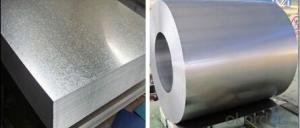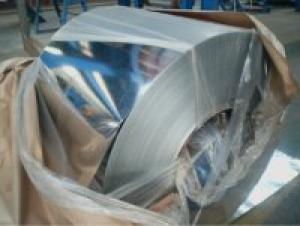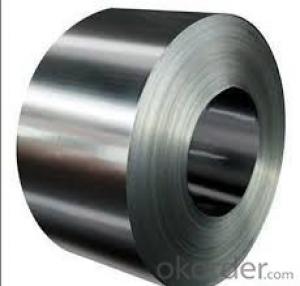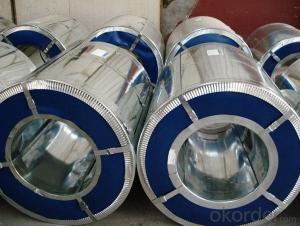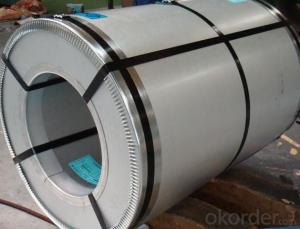Structure of Hot-Dip Galvanized Steel Sheet
- Loading Port:
- China main port
- Payment Terms:
- TT OR LC
- Min Order Qty:
- 25 m.t.
- Supply Capability:
- 10000 m.t./month
OKorder Service Pledge
OKorder Financial Service
You Might Also Like
1.Structure of Hot-Dip Galvanized Steel Sheet Description:
Hot-dip galvanized steel coils are available with a pure zinc coating through the hot-dip galvanizing process. It offers the economy, strength and formability of steel combined with the corrosion resistance of zinc. The hot-dip process is the process by which steel gets coated in layers of zinc to protect against rust. It is especially useful for countless outdoor and industrial applications. Production of cold formed corrugated sheets and profiles for roofing, cladding, decking, tiles, sandwich walls, rainwater protective systems, air conditioning duct as well as electrical appliances and engineering.
2.Main Features of the Hot-Dip Galvanized Steel Sheet:
• Excellent process capability
• Smooth and flat surface
• Workability, durability
• Excellent anticorrosive property
• High strength
• Good formability
• Good visual effect
3.Hot-Dip Galvanized Steel Sheet Images

4.Hot-Dip Galvanized Steel Sheet Specification
Standard: ASTM, JIS,EN
Grade: CS, DX51D+Z,SGCC, SS 230~550,S220GD+Z~S550GD+Z, SGC340~SGC570
Thickness: 0.1mm~5mm
Width: max 2000mm
Coil weight:3-12 MT
Coil ID:508/610mm
Surface structure: zero spangle, regular spangle or minimum spangle
Surface treatment: Chromate treatment, Oiled/dry, skinpassed/non-skinpassed
Packing: Standard seaworthy export package
Technology test results:
Processability | Yield strength | Tensile strength | Elongation % | 180°cold-bending |
Common PV | - | 270-500 | - | d=0,intact,no zinc removal |
Mechanical interlocking JY | - | 270-500 | - | d=0,intact,no zinc removal |
Structure JG | >=240 | >=370 | >=18 | d=0,intact,no zinc removal |
Deep drawn SC | - | 270-380 | >=30 | d=0,intact,no zinc removal |
EDDQ SC | - | 270-380 | >=30 | d=0,intact,no zinc removal |
5.FAQ of Hot-Dip Galvanized Steel Sheet
We have organized several common questions for our clients,may help you sincerely:
1.How about your company?
A world class manufacturer & supplier of castings forging in carbon steel and alloy steel,is one of the large-scale professional investment casting production bases in China,consisting of both casting foundry forging and machining factory. Annually more than 8000 tons Precision casting and forging parts are exported to markets in Europe,America and Japan. OEM casting and forging service available according to customer’s requirements.
2.How to guarantee the quality of the products?
We have established the international advanced quality management system,every link from raw material to final product we have strict quality test;We resolutely put an end to unqualified products flowing into the market. At the same time, we will provide necessary follow-up service assurance.
3. How long can we receive the product after purchase?
Usually within thirty working days after receiving buyer’s advance payment or LC. We will arrange the factory manufacturing as soon as possible. The cargo readiness usually takes 15-30 days, but the shipment will depend on the vessel situation.
- Q:What are the different types of surface treatments for steel coils?
- There are several different types of surface treatments available for steel coils, each designed to enhance the appearance, protect against corrosion, and improve the overall durability of the steel. Some of the commonly used surface treatments for steel coils include: 1. Hot-dip galvanizing: This process involves immersing the steel coils in a bath of molten zinc, which forms a protective layer on the surface. Hot-dip galvanizing provides excellent corrosion resistance and can withstand harsh environments. 2. Electro-galvanizing: In this method, a thin layer of zinc is electroplated onto the surface of the steel coils. Electro-galvanizing offers good corrosion resistance and improves the aesthetics of the steel. 3. Organic coating: Steel coils can be coated with organic materials such as paints, lacquers, or polymer films. These coatings provide protection against corrosion, abrasion, and UV radiation, while also offering a wide range of color options. 4. Phosphating: Phosphating is a chemical treatment that converts the steel surface into a layer of phosphate crystals. This treatment enhances the adhesion of subsequent coatings and improves the corrosion resistance of the steel. 5. Chromating: Also known as passivation, chromating involves the application of a chromate conversion coating onto the steel surface. This treatment enhances the corrosion resistance and provides a decorative finish. 6. Oiling: Oiling is a simple surface treatment that involves applying a thin layer of oil onto the steel coils. This treatment helps prevent corrosion during storage and transportation and can be easily removed before further processing. 7. Pickling: Pickling is a process where the steel coils are immersed in an acid solution to remove impurities and scale from the surface. This treatment improves the surface finish and prepares the steel for subsequent processing or coatings. 8. Tin plating: Steel coils can be coated with a layer of tin through electroplating. Tin plating provides excellent corrosion resistance, solderability, and aesthetic appeal. These are just a few of the many surface treatments available for steel coils. The choice of treatment depends on the specific requirements of the application, including the desired appearance, corrosion resistance, and environmental conditions the steel will be exposed to.
- Q:Steel roofing info. Pros and cons on steel roofing?
- Steel roofing Pro...life of product is much longer then Asphalt shingles....Looks great...multi colors.......Just love the stuff... Cons....More costly then singles at first but since it last longer it is really a better buy.......
- Q:Are steel pokemon weak against any attacks? If so, what types? (like water, grass, etc.)
- Thier weak aginst Fire type pokemon.
- Q:How are steel coils inspected for yield strength using tensile testing?
- Steel coils are inspected for yield strength using tensile testing by taking a sample from the coil and subjecting it to a controlled force until it reaches its yield point. The force required to cause permanent deformation in the sample is measured, and this value represents the yield strength of the steel coil.
- Q:What are the common methods of testing the durability of steel coils?
- There are several common methods used to test the durability of steel coils. These methods evaluate the strength, performance, and resistance of steel coils to various stresses and conditions. Some of the most widely used methods include: 1. Tensile testing: This method involves subjecting steel coils to tension until they fail. It measures the maximum stress a coil can withstand before breaking or deforming. Tensile testing provides valuable information about the strength and ductility of steel coils. 2. Bend testing: This method evaluates the flexibility and resistance to deformation of steel coils. It involves bending the coil to a specified angle and examining whether it cracks or fractures. Bend testing is essential to assess the durability of coils in applications that involve bending, such as construction or automotive industries. 3. Impact testing: This method assesses the ability of steel coils to withstand sudden shocks or impacts. It involves striking the coil with a heavy object and measuring the energy absorbed or the extent of deformation. Impact testing is crucial in determining the toughness and resistance of coils to sudden loading conditions. 4. Corrosion testing: Steel coils are often exposed to corrosive environments, such as moisture or chemicals. Corrosion testing evaluates the resistance of steel to degradation caused by these corrosive agents. Methods like salt spray testing or electrochemical testing are commonly used to simulate and assess the durability of steel coils in corrosive conditions. 5. Fatigue testing: This method evaluates the ability of steel coils to withstand repeated loading and unloading cycles. It involves subjecting the coil to cyclic stresses until it fails. Fatigue testing is crucial in industries where coils are subjected to repetitive loading, such as in machinery or infrastructure applications. 6. Hardness testing: This method measures the resistance of steel coils to indentation or scratching. It provides information about the strength and wear resistance of the material. Common hardness testing methods include Brinell, Rockwell, and Vickers hardness tests. 7. Non-destructive testing: In addition to destructive testing methods mentioned above, non-destructive testing techniques are also used to evaluate the durability of steel coils. These methods, such as ultrasonic testing, magnetic particle inspection, or X-ray testing, allow for the detection of internal defects or flaws without damaging the coil. By employing these testing methods, manufacturers and industries can ensure that steel coils meet the required durability standards and perform reliably in their intended applications.
- Q:Help please.What atoms are there in steel?Like water is equals to 1 Oxygen atom + 2 Hydrogen atoms.Thnx 4 d help.
- Steel is an alloy consisting mostly of iron, with a carbon content between 0.2 and 1.7 or 2.04% by weight (C:1000–10,8.67Fe), depending on grade. Steel is Fe(iron) and Carbon alloy. These are the atoms in certain ratio that make up steel. Its not a molecule but alloy.
- Q:What are the different types of steel coil edges?
- There are several different types of steel coil edges, each with its own unique characteristics and applications. 1. Mill Edge: This is the most common type of steel coil edge. It is produced by cutting the coil at the mill and does not undergo any additional processing or treatment. Mill edge coils have a natural, slightly rounded edge, which makes them suitable for a wide range of applications. 2. Slit Edge: Slit edge coils are created by cutting the coil along its width using a slitting machine. This process results in a straight and smooth edge, making them ideal for applications that require precise measurements, such as automotive parts or electrical components. 3. Deburred Edge: Deburred edge coils have undergone an additional process to remove any burrs or sharp edges that may be present after slitting. This makes them safer to handle and reduces the risk of damage during fabrication or installation. Deburred edge coils are commonly used in the construction industry, especially for structural steel components. 4. Rounded Edge: As the name suggests, rounded edge coils have a rounded edge profile. This type of edge is achieved through a specific rolling process that creates a smooth and curved edge. Rounded edge coils are often used in applications where safety is a concern, such as in the manufacturing of household appliances or kitchen equipment. 5. Sheared Edge: Sheared edge coils are produced by cutting the coil with shearing blades, resulting in a straight edge with a slight burr. While sheared edge coils may have a rougher finish compared to other types of edges, they are still commonly used in applications that do not require a high level of precision, such as general fabrication or shelving. Overall, the choice of steel coil edge depends on the specific requirements of the application, including factors such as measurement precision, safety considerations, and aesthetic preferences.
- Q:How are steel coils inspected for hardness?
- Steel coils are inspected for hardness using various methods to ensure their quality and suitability for specific applications. One common method is the Rockwell hardness test, which involves pressing a diamond or ball indenter into the surface of the coil and measuring the depth of indentation. The hardness value is then determined based on the depth measurement. Another method used is the Brinell hardness test, which employs a hardened steel or tungsten carbide ball indenter to create an indentation on the coil's surface. The diameter of the indentation is measured, and the hardness value is calculated using a formula based on the applied load and the diameter of the indentation. Vickers hardness test, on the other hand, uses a pyramidal diamond indenter to create an indentation on the coil's surface. The indentation diagonal lengths are measured, and the hardness value is calculated using a formula based on the applied load and the diagonal lengths. Apart from these traditional methods, modern technology has introduced non-destructive testing techniques such as ultrasonic testing and eddy current testing. Ultrasonic testing involves transmitting ultrasonic waves through the coil and measuring the time taken for the waves to return. Changes in the wave pattern can indicate variations in hardness. Eddy current testing uses electromagnetic induction to detect changes in electrical conductivity, which can be correlated to hardness variations in the steel coil. Overall, steel coils undergo rigorous inspection processes using a combination of traditional and advanced techniques to ensure their hardness meets the required specifications. These inspections play a crucial role in maintaining the quality and reliability of steel products in various industries.
- Q:What is the role of steel coils in the manufacturing of storage racks?
- Steel coils play a crucial role in the manufacturing of storage racks as they are used as the primary material for constructing the frame and shelves of the racks. The coils are processed and cut into specific dimensions to form the structural components and provide strength and stability to the storage racks.
- Q:Ik iron was too heavy but could steel bolts have been used. I can see iron dissolving at surface when to be a danger it needs to reach the core of sun.. But so does steel go deeper in(w.e alloy turned from iron)..I wanna know which would be worse iron..or upgraded iron(steel) and if the steel would have worse effects than normal iron..Im sure if we used iron we used steel
- Reach the core of the sun? No material can even get past the corona of the sun, where did you hear Ulysses went to the core? The spacecraft Ulysses orbits the sun at about 5 au. that's 5 times the earths orbit.. Steel is used instead of Iron because steel is much stronger and therefore you can use smaller 'bolts' to accomplish the same thing, reducing the weight. As far as most structures are concerned steel is better than plain Iron in every category. So Iron is worse i guess.
1. Manufacturer Overview |
|
|---|---|
| Location | |
| Year Established | |
| Annual Output Value | |
| Main Markets | |
| Company Certifications | |
2. Manufacturer Certificates |
|
|---|---|
| a) Certification Name | |
| Range | |
| Reference | |
| Validity Period | |
3. Manufacturer Capability |
|
|---|---|
| a)Trade Capacity | |
| Nearest Port | |
| Export Percentage | |
| No.of Employees in Trade Department | |
| Language Spoken: | |
| b)Factory Information | |
| Factory Size: | |
| No. of Production Lines | |
| Contract Manufacturing | |
| Product Price Range | |
Send your message to us
Structure of Hot-Dip Galvanized Steel Sheet
- Loading Port:
- China main port
- Payment Terms:
- TT OR LC
- Min Order Qty:
- 25 m.t.
- Supply Capability:
- 10000 m.t./month
OKorder Service Pledge
OKorder Financial Service
Similar products
New products
Hot products
Hot Searches
Related keywords
